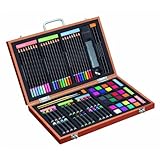|
A flower is the reproductive structure found in flowering plants and its function is to produce seeds of the next generation. The grouping of flowers, also known as bloom or blossom, is called the inflorescence.
The word flower is from Middle English 'flour' meaning best of anything; blossom from the Proto-Indo-European base bhlo- to blossom, flourish, thrive.
In addition to serving as the reproductive organs of flowering plants, flowers are admired and used by humans to beautify their environment, commemorate special lifetime events, and as a source of food.
- Flower vegetables include broccoli, cauliflower and artichoke.
- The most expensive spice, saffron, consists of dried stigmas of a crocus.
- Hops flowers are used to flavor beer.
- Marigold flowers are fed to chickens to give their egg yolks a golden yellow color, which consumers find more desirable.
- Dandelion flowers are often made into wine.
|
PLANTING SUGGESTIONS ~
SEED TAPES are a great way to efficiently space tiny seeds - you can make your own seed tape on a less the hospitable early spring day and then put them in prepared soil when the time is right. You will need toilet paper, flour glue or Elmer's School glue, a little paint brush, and tiny seeds, of course.
SEED BALLS are great way to reclaim land that is too difficult to cultivate by just scattering the seed balls - which are really already planted seeds - by tossing the balls onto the ground as you take a walk. The balls, which you prepared from the soil recipe below, are too big for a bird to eat and protects the seeds from insects.
SEED BALL RECIPE: Gather 5 parts dry red clay (like from the art store), 3 parts humus or organic compost, 1 part assorted seed, 2 parts water; mixing container; cayenne pepper protection from insects is optional (rubber gloves for hand mixing with pepper).
The Seed Ball Story - video.
|
|
|











